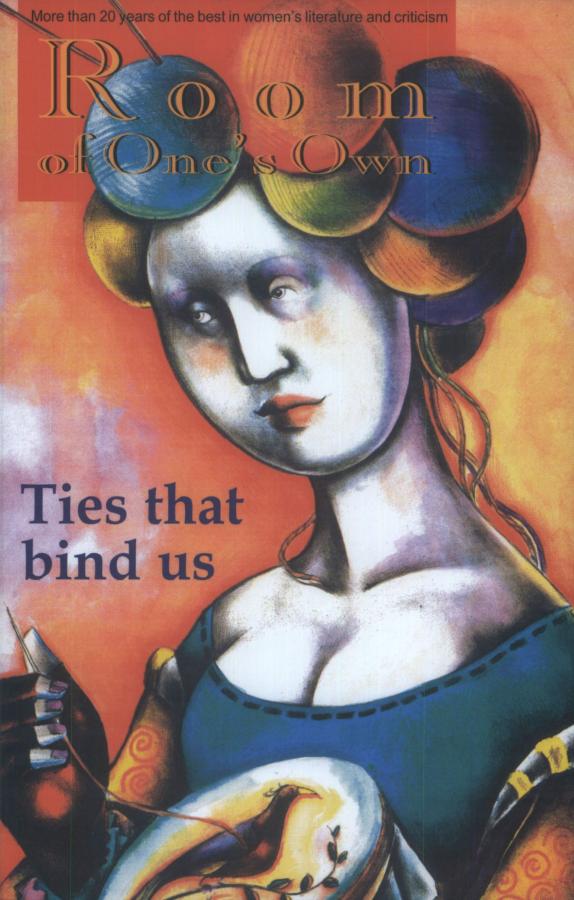Ties that Bind Us | 22.2
1999
Digital only; out of stock in print.
Women writers are fascinated by relationships—especially bad ones, complicated ones, broken ones. And this seems to be reflective of women in general.
It’s not necessarily because we think we can fix them: that would be a man’s objective. Instead women want to under stand the ties that bind and sometimes bruise, to analyze and explain, poke and prod and peel, because we know our closest relationships reveal truths about ourselves.
This volume is bursting with literature made out of love, and a few other intense emotions.
There are gothic girls and witchy women, queens and Barbies, characters with rampant insecurities, capable of restless comparisons and endless introspection about how they relate to the important people in their lives.
Several pieces focus on one of the most intense relationships a woman can have—that shared with her sister. I have four sisters and so I know a sister can be your soulmate, your harshest critic, your closest confidante, your sparring partner or, most likely, a complicated conglomeration of all of the above. You are inescapably connected, boundby blood and history, parents and memory, nature and nurture.
That is clear in Julie Stoyka’s “Same Womb,” a tale told by a younger sister who wants to be like her older sister but is painfully— later, gratefully— aware of their differences. There is anger and spite, fist fights and profanity, and, ultimately, a love so basic that it can’t be extinguished.
Kiera Miller tells of another set of sisters—recounted again from the younger’s point of view— who, despite their disharmony, have a bond sealed with shared experience and intimate knowledge of each other’s core identity. Vancouver artist Pat Leidl, on page 31, gives us more duelling siblings. Setting a different scene in “Love and the Galaxy,” Jenny Brantley shows the depth ofwhat sisters can share: fast cars speeding towards freedom and the secrets ofthe universe.
Susannah M. Smith creates other worldly women in goddess trappings, who are as close as lovers, or perhaps closer: “Like a sister to me, loves me that much.” Everything is fine on the surface between these two,but hearts are being swallowed underneath. Like sisters. Narcissistic love that is both unconditional and complicated.
The love of a sister is perhaps what most closely approximates the love of a mother. And Vancouver poet Susan McCaslin expresses a mother’s feelings perfectly: “I love you like the palm of my hands.” In an unusual turnaround, Andrea Munro gives us a daughter’s angst over a mother who leaves her— luckily her father is there to pick up the pieces. Darker fathers populate the work ofJulie Chan and Susan Landgraf.
Of course, there is also much to be written about the most essential of relationships, that shared between lovers. Elise Juska’s potent story discloses empty trysts involving a heroine who is unhooked and unstraped—exposed. Maureen Paxton, C.L. Mower & C.G. Carroll (in an intriguing dialogic poem), and Peggy Fisher write of claustrophobic relationships and desire, stability and chaos.
McCaslin gets another—and fittingly, the last—mention here since she goes beyond all of this and back to the most basic of connections: our sense of self, separate from Prince Charming and anyone else. “You are Rapunzel leaving her tower/to meet herself in the glen./ You are writing yourself and the stories/ of women, and poems are bounding out of closets/ and file drawers and people care.”

$10.00
Additional information
| Delivery | Canada, USA, International, Digital |
|---|
In this issue: Virginia Aulin, Joan Bond, Jenny Brantley, Cindy G. Carroll, Julie Chan, Peggy Fisher, Elsie Juska, Susan Landgraf, Pat Leidl, Susan McCaslin, Kiera Miller, C. Leiren Mower, Andrea Munro, Maureen Paxton, Susannah Mary Smith, Julie Stoyka